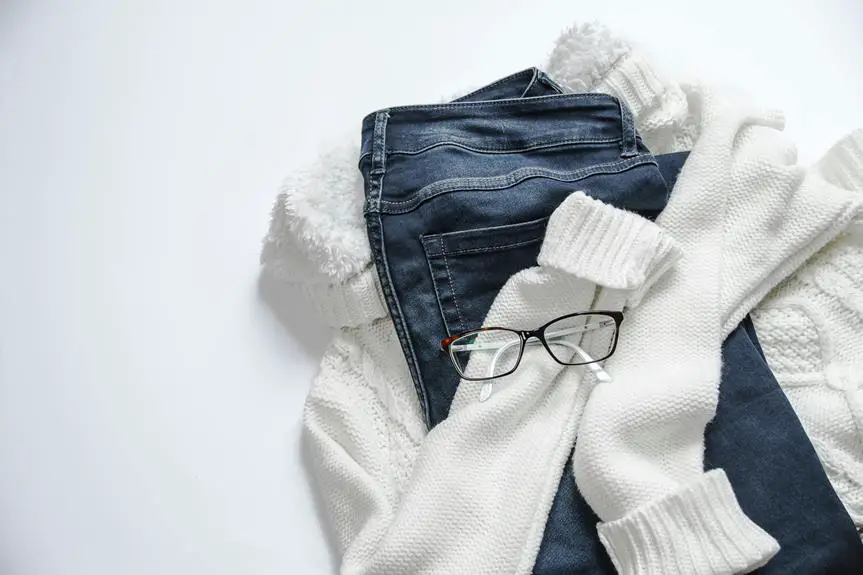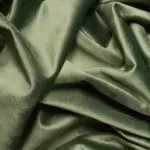When you choose seersucker for its comfort and style, you might not consider the potential allergy risks it poses. The fabric's unique texture can trap allergens, and the chemicals used for durability may worsen skin sensitivities. To ensure you're making a safe choice, it's important to understand what could be lurking in those crinkles. By being informed about potential allergens and how to mitigate risks, you can enjoy your seersucker garments without worry. But what steps should you take to protect your skin effectively?
Table of Contents
Understanding Seersucker Fabric
Seersucker fabric, known for its distinctive crinkled texture, offers a lightweight and breathable option that's perfect for warm-weather wear. This unique texture is created through a special weaving technique that alternates between tight and loose threads, resulting in raised stripes. When you wear seersucker, you'll appreciate how the fabric lifts away from your skin, allowing air to circulate and keeping you cool.
Seersucker is typically made from cotton, but you can also find blends that incorporate synthetic fibers for added durability. Its charming appearance makes it a favorite for casual and semi-formal attire, such as summer suits, dresses, and shirts. Plus, it's often available in various colors and patterns, letting you express your personal style.
Caring for seersucker is relatively simple. Most items are machine washable and wrinkle-resistant, which means you won't spend too much time ironing. Just remember to follow the care label instructions to maintain its unique texture and appearance.
Common Allergens in Fabrics
Many fabrics can harbor common allergens that might trigger sensitivities or reactions in sensitive individuals. If you're prone to allergies, it's essential to be aware of these potential culprits.
Synthetic fabrics, like polyester and nylon, often contain chemicals used during production. These chemicals can irritate your skin and cause allergic reactions.
Natural fibers, such as cotton and wool, can also pose risks. Cotton may be treated with pesticides, while wool can carry lanolin, which some people find irritating.
Mold and dust mites love to settle in fabrics, too. If you've got old curtains, upholstered furniture, or carpets, they might be harboring allergens that can worsen your symptoms. It's vital to keep these items clean and consider options like hypoallergenic fabrics, which are less likely to cause reactions.
When purchasing clothing, always check labels for known irritants and opt for organic or untreated materials when possible. By staying informed about the allergens within your wardrobe, you can take steps to minimize your exposure and enjoy your favorite fabrics without discomfort.
Seersucker and Skin Reactions
If you have sensitive skin, wearing seersucker can sometimes lead to unexpected reactions due to its textured weave and potential chemical treatments. The unique crinkled design of seersucker can trap dirt, sweat, and allergens, which might irritate your skin. When these particles linger against your skin, you could experience redness, itching, or even rashes.
Additionally, some manufacturers treat seersucker fabrics with chemicals to enhance durability or wrinkle resistance. These treatments can cause skin irritation, especially if you're sensitive to specific substances like formaldehyde or dyes. It's important to be aware of these factors, as not all seersucker is created equal.
If you notice any signs of irritation after wearing seersucker, you might want to wash the fabric before your next wear. A simple wash can remove residual chemicals and allergens, making it safer for your skin.
Choosing high-quality, untreated fabrics can also help reduce the risk of skin reactions. Always check labels and consider opting for organic or hypoallergenic options when available. Pay attention to how your skin reacts, and don't hesitate to consult a dermatologist if you experience persistent issues.
Preventing Allergic Reactions
To prevent allergic reactions when wearing seersucker, always choose fabrics that are free from harsh chemicals and allergens. Look for organic cotton or blends that prioritize skin-friendly materials. Before you make a purchase, check the labels for certifications that indicate the absence of harmful substances. Additionally, wash your seersucker garments before wearing them to remove any residual chemicals from the manufacturing process.
Here's a quick guide to help you choose the right seersucker fabric:
| Fabric Type | Benefits | Considerations |
|---|---|---|
| Organic Cotton | Soft, breathable, hypoallergenic | May wrinkle more easily |
| Polyester Blend | Durable, resistant to fading | Can trap heat |
| Linen | Naturally antibacterial | May irritate sensitive skin |
| Bamboo | Moisture-wicking, soft | Can be pricier |
Alternatives to Seersucker
Seersucker isn't your only option; there are several breathable fabrics that provide comfort and style without the potential for allergic reactions. If you're looking for alternatives that won't irritate your skin, consider these three breathable fabrics:
- Linen: This natural fabric is lightweight and highly breathable, making it perfect for warm weather. Plus, it's less likely to cause skin irritation compared to synthetic fabrics.
- Cotton: A classic choice, cotton is soft and hypoallergenic. Opt for organic cotton to avoid any chemicals used in the conventional farming process.
- Bamboo: Known for its moisture-wicking properties, bamboo fabric keeps you cool and dry. It's also naturally antibacterial, which can help reduce irritation.
Each of these options offers comfort while minimizing the risk of allergic reactions. When choosing your summer wardrobe, consider these alternatives to seersucker for a stylish and skin-friendly experience.
You'll enjoy the benefits of breathable fabrics without compromising your comfort or health. So, next time you're shopping, keep these fabrics in mind for a refreshing change!
Frequently Asked Questions
Can Seersucker Fabric Be Washed Frequently Without Damage?
Yes, you can wash seersucker fabric frequently without damage. Just follow care instructions, use a gentle cycle, and avoid harsh detergents. Air drying or low heat can help maintain its shape and texture over time.
Is Seersucker Suitable for Sensitive Skin Types?
Seersucker's lightweight and breathable qualities make it suitable for sensitive skin. It typically doesn't irritate, but you should always test a small area first to ensure it doesn't cause any adverse reactions for you.
How Does Humidity Affect Seersucker Fabric?
Humidity can make seersucker feel heavier, as the fabric absorbs moisture. You might notice it clings to your skin more and loses some of its crispness, but it still remains breathable and comfortable for warm weather.
What Are the Best Colors for Seersucker Clothing?
When choosing seersucker colors, opt for light shades like pastel blues, pinks, or greens. These hues not only reflect summer vibes but also keep you cool, making your outfit both stylish and comfortable during warm weather.
Can Seersucker Be Used for Outdoor Furniture?
Seersucker's lightweight and breathable fabric makes it great for outdoor furniture. You'll enjoy its classic look, and it can withstand some weather, but you should always check for specific care instructions to ensure longevity.
- Nonwoven Polypropylene Safety: A Full Breakdown - July 11, 2025
- Care Instructions for Nonwoven Fabrics: Washing and Drying - July 11, 2025
- The Difference Between Woven and Nonwoven Wallpaper Explained - July 11, 2025






